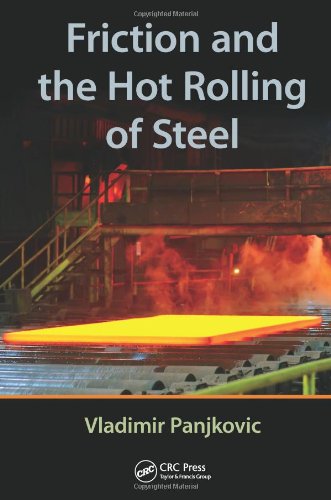

Most ebook files are in PDF format, so you can easily read them using various software such as Foxit Reader or directly on the Google Chrome browser.
Some ebook files are released by publishers in other formats such as .awz, .mobi, .epub, .fb2, etc. You may need to install specific software to read these formats on mobile/PC, such as Calibre.
Please read the tutorial at this link: https://ebookbell.com/faq
We offer FREE conversion to the popular formats you request; however, this may take some time. Therefore, right after payment, please email us, and we will try to provide the service as quickly as possible.
For some exceptional file formats or broken links (if any), please refrain from opening any disputes. Instead, email us first, and we will try to assist within a maximum of 6 hours.
EbookBell Team

0.0
0 reviewsWhen it comes to metal rolling, understanding and controlling frictional phenomena is essential to improving product and developing a more effective approach to friction reduction. Providing a historical perspective that goes as far back as the days of Leonardo da Vinci and continues up until the present day, Friction and the Hot Rolling of Steel chronicles the fundamental causes of friction. This book includes well-documented, on-site observations in various commercial plants, presents and examines practical problems, and provides a critical analysis of literary data related to the subject.
It explains the base mechanisms of friction, and offers insight and instruction on improving the control and understanding of friction in hot strip mills and other industrial plants. The text presents mathematical models of friction in control and general engineering in a way that enables engineers to test and refine them in their plants. Engineers have the ability to use them to control friction and minimize its negative effects, particularly as it relates to energy waste and product defects.
Organized into four sections, this book outlines the evolutional concepts of friction, and covers the general phenomena relevant to the rolling of metals. This includes the impact of roughness and velocity, basics of liquid and solid lubrication, mathematical modelling, and the properties of materials that affect friction in steel rolling, such as metals, oxides, and carbides. It connects the theoretical concepts, laboratory-scale observations, and phenomena in other areas of science and engineering to the large-scale industrial process of hot rolling. It also addresses roll properties, oxidation, wear and chemical composition of rolls and their impact on friction, the evolution of friction over schedules and roll campaigns, and mathematical modelling of friction in hot rolling.
Friction and the Hot Rolling of Steel contains a large body of technical information that includes various chemical and physical properties of relevant materials, mathematical models, and plant and laboratory observations. It also provides an extensive reference list of sources that address specific problems and interests in more detail.
This text services technical, research, and academic personnel working in steel processing, railway engineering, rolling of other metals, solid lubrication, the automotive industry, and more.